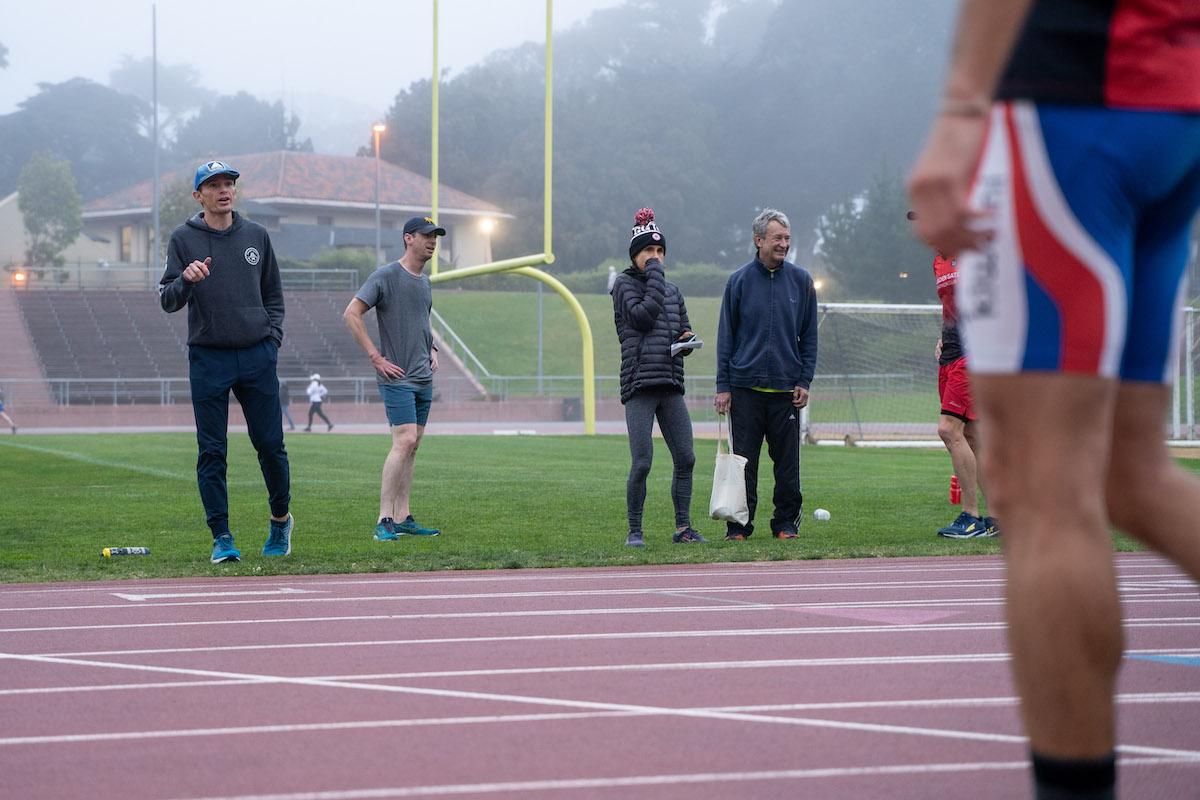Coaching and the Art of Giving a Shit
|
Do I need a degree in exercise science? Should I get this certification or that one? Is the Lydiard system better than Daniels for developing an athlete? Which books should I read? These are a sampling of some of the most common questions I get on a near weekly basis from aspiring coaches who are looking to get into the field and often don’t know where to start. Their curiosity comes from a good place—they’re trying to learn how to best serve the athletes they hope to work with—and they’re not bad questions, but these initial inquiries often miss the mark.
My response is almost always the same, usually some version of “it depends,” which is often an unsatisfying answer until we dig a little deeper into what it means to be a coach. In my experience, many young coaches (and even some experienced ones) don’t have their priorities straight: they’re more concerned with what they know—and letting others know what they know—instead of showing their athletes how much they care. Coaching, in their view, is programmatic, i.e. “If I learn a lot, and figure out the magic formula, my athletes will have success.” Spoiler: 1. A universal magic formula doesn’t exist. 2. There’s a big difference between programming and coaching: the former is transactional while the latter is transformational. Yes, you have to know your shit, but first your athletes need to know that you give a shit otherwise you have no shot at helping them get where they want to go.
“Coaching, I would argue, is the least about the workouts,” Laura Schmitt, who led successful programs at Redwood High School in California for 35 years before retiring in 2019, told me on Episode 100 of the podcast. “In fact, if you’re a coach, you should have phenomenal workouts. You should have a progression that takes a child, an adult, anyone—in four years, of course they’re going to get better, you just have to write it out properly. It’s written in every book, you can pick up any book, anyone can be a ‘give workout’ person. What isn’t easy, unless it is, is knowing how to connect with a person, to get the most out of them, so they can feel good about themselves.”
Workouts and training plans are like a roadmap: you can study them all you want but they’re bound to change and don’t always get you where you want to go. That’s where coaching comes in. The coach is a co-pilot, an experienced passenger sitting alongside the athlete on his or her journey, advising them when to speed up or slow down, pointing out bumps in the road, helping them navigate their way out of jams from time to time. The athlete has control of the wheel but they also have trust that their coach won’t steer them the wrong way.
At its core, coaching is a relationship between two people built upon a foundation of trust and communication. This should be the first place an aspiring coach invests his or her time and energy: understanding how to connect, learning how to listen and communicate, working to gain trust. The rest of their education, in whatever form it takes, is ongoing from there.
Note: This piece first ran in Issue #27 of Like the Wind, my favorite running magazine. I’ve been a paying subscriber for the past three years and it’s always a great day when a new issue arrives in my mailbox. This quarterly publication features incredible writing, beautiful illustrations, and amazing photography that really helps it stand out from the rest. I’ve saved every issue I’ve ever received because each one is its own unique piece of art, keepsakes I can’t bear the thought of throwing out. Check out LtW for yourself, buy a back issue or two, or sign up for your own subscription here. Enter the code MARIO in the discount code box at checkout and you won’t get a discount but you will receive a free set of Like the Wind postcards featuring some cool illustrations. In the interest of transparency, I am not getting compensated in any way if you use the aforementioned code. It is simply a thank you from my friends at LtW for checking out their awesome magazine.